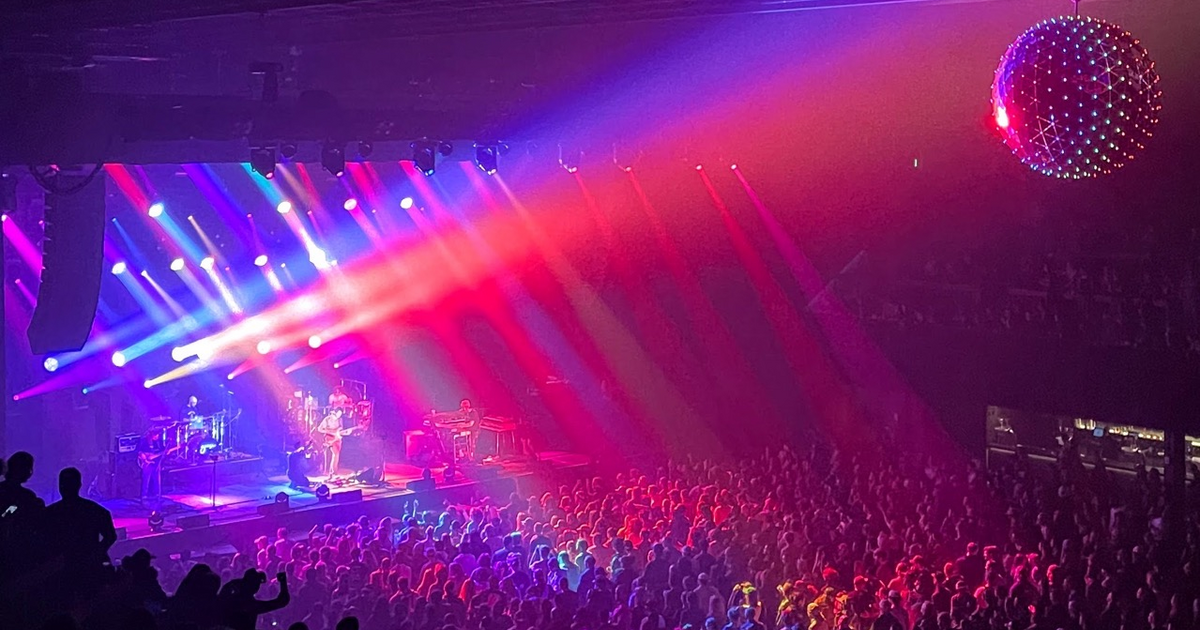#slr
Rain Forest Oasis
Doing some summer traveling through time & place rescuing & re-locating long-lost digital scans from 'vintage' drives.
This is along the legendary Hana Highway, on Maui. Hot day, long drive, & then: my "oasis". I like the colors, too.
Taken with a Canon #SLR &
#Fujichrome
More on my site -
Good as any starting point: Kona - @ http://www.fenichel.com/Kona.htm
Flickr album @
https://flic.kr/s/aHsjHYaaHp
Climate-Driven #SeaLevelRise Exacerbates #Alaskan and #Cascadian #Tsunami Hazards in Southern California: Implications to Design Parameters
by Ignacio Sepúlveda, Andrew Mosqueda
First published: 11 March 2025
Abstract
"Tsunami hazards in Southern California are expected to be exacerbated by the #ClimateChange driven sea level rise (#SLR). Two key questions are how relevant is this exacerbation and whether tsunami design parameters are significantly affected. We perform a non-stationary probabilistic tsunami hazard assessment (nPTHA) in the Southern California bays of San Pedro and San Diego, with consideration of tsunamis generated by earthquakes in the Alaska-Aleutians (#ASZ) and Cascadia subduction zones (#CSZ). We evaluate the changes of the maximum considered tsunami (#MCT) design parameter, defined as a tsunami intensity that is exceeded with a 2% probability in 50 years. MCT elevation maps in the bays are calculated incorporating tides and SLR by means of a surrogate model. MCT elevations at assessed sites in San Pedro Bay and San Diego yield 2 m. The nPTHA shows that tsunamis generated in the ASZ zone are more hazardous in Southern California than those from the CSZ when evaluating MCT intensities. A comparison of scenarios with and without SLR also shows an increase of the MCT elevations of more than a foot in San Pedro Bay and San Diego, demonstrating that SLR causes a relevant impact, comparable to the influence of tides. The effect of SLR increasing MCT values is also comparable to the sensitivity of nPTHA results to some common earthquake epistemic uncertainties, such as the slip marginal distribution. Future tsunami hazard maps shall incorporate SLR when exposure times are long, as well as the uncertainty of tsunamigenic earthquake properties."
Key Points
- Earthquakes in Alaska and Cascadia subduction zones produce tsunami hazards in Southern California that are exacerbated by sea level rise
- The elevation of maximum considered tsunamis (MCT) in San Pedro Bay and San Diego grow by more than a foot when SLR influence is included
- The impact of Alaskan earthquake epistemic uncertainties on MCT elevations in Southern California is similar to that of the sea level rise
Plain Language Summary
"Climate-change-driven sea level rise is expected to worsen tsunami hazards in the long term. Tsunami waves will be able to propagate over rising sea levels that will enable them to inundate higher land. In this study, we quantify the increase of tsunami hazards in Southern California due to sea level rise. We consider tsunamis originated in the Alaska and Cascadia subduction zones. Changes of tsunami design parameters, as a result of the sea level rise, are also analyzed. Namely, we analyze the changes of the 'maximum considered tsunami' (MCT) elevation, defined as the elevation exceeded with probability 2% in 50 years. We find that earthquakes of the Alaska Subduction Zone constitute the main #tsunamigenic contributor. We also find that sea level rise increases MCT tsunami elevations by 0.3 m. With this increase, MCT levels reach 2 m in San Pedro Bay and San Diego. We compare the impact of sea level rise exacerbating tsunami hazards with the impact of common uncertainty sources of tsunami hazard assessment models. The uncertainty of earthquake models, for example, can produce differences in MCT levels that are comparable to the SLR influence."
Source:
https://agupubs.onlinelibrary.wiley.com/doi/full/10.1029/2024EF005435
https://www.abc.net.au/news/2025-06-18/why-digital-cameras-are-making-a-comeback/105414664
Hilarious. Am now counting down the weeks til my Ricoh XR-1 #SLR comes back in vogue. Shall celebrate by listening to my 300+ C90 cassette tapes.
Birthday present just arrived. a Tamron 150-600mm lens for my SLR. Snuck out quickly between calls to take a couple pics in the front yard. Gonna have a good time with this!
Legend. And IMO, the greatest mechanical 35mm camera ever made. Developed at the sunset of the film 35mm SLR. Tested in Antartica.
IMO, the Leica M6 doesn't even deserve to be in the same room as this camera (though Leica's optics do).
The Nikon FM3a. Legend.
"Sea level along the U.S. coastline is projected to rise, on average, 10 - 12 inches (0.25 - 0.30 meters) in the next 30 years (2020 - 2050)."
By 2100, #SLR = 2 feet at least,
3.5 - 7 feet if the world fails to curb carbon #emissions.
#SeaLevelRise #UnitedStates
https://oceanservice.noaa.gov/hazards/sealevelrise/sealevelrise-tech-report.html
@Ruth_Mottram I’m still looking for literature on food security and population growth - or decline - under SPPs. Did not find it.
One figure I still have in mind from Will Steffen’s presentation (unfortunately without ref) few years back: 1 billion can be sustainably fed in a 4C world (so around 2200?). That’s 10% from the projects 10 billion by 2100.
#SLR would be the minor issue then.
One of the more advanced ideas is that we can eject particles (aerosols) into the stratosphere and these will reflect solar radiation. This can reduce the temperature of the planet because we get less solar radiation at the surface.
There is also a growing push to develop infrastructure that can block warm water from the bottom of ice shelves and glaciers so that we reduce bottom melt with the idea that this might reduce #SLR rise. 2/
My preferred carbon dioxide removal #CDR technology is #BioChar but because of sea level rise #SLR there's going to be a growing demand for beach sand replenishment.
UNDO is a world-leading carbon dioxide removal project developer specialising in enhanced rock weathering. Enhanced weathering is a nature-based technology that permanently locks away CO₂ from the atmosphere.
They spread the basalt on farmland, but can be used for beaches too. https://un-do.com/enhanced-rock-weathering/
The Best And Worst Case Scenarios For Sea Level Rise
--
https://www.theguardian.com/environment/2023/jun/26/its-absolutely-guaranteed-the-best-and-worst-case-scenarios-for-sea-level-rise <-- shared media article
--
#GIS #spatial #mapping #model #modeling #hydrology #water #hydrospatial #spatiotemporal #spatialanalysis #global #sealevel #sealevelrise #SLR #india #london #china #mumbai #bangladesh #NYC #newyork #newyorkcity #cities #megacities #impacts #coast #coastal #flood #flooding #stormsurge #infrastructure #climatechange #extremeweather #erosion #deposition #sedimentation #salinity #groundwater #groundwaterintrusion #groundwatersalinity #subsidence #precipitation #rainfall #storms #geology #engineeringgeology #naturalhazard #cyclone #hurricanes #economic #economy #mitigation #costs #publicsafety #publichealth #coastalresilience #coastalcommunities #coastalengineering #coastline #coastalprotection #future #change
Like sand through an hourglass…
Found old set of slides of #fieldwork…and wondered the fate of The Breakers Condominiums in Neskowin, #Oregon. In 1989, there was an erosional scarp at the base of the shallow foredunes that a set of condos had just been built upon…threat was high enough that a permit to construct a rip-rap shoreline control structure was obtained.
Forward 30+ years…and the buildings still stand, protected by a substantial revetment of rock. The system has likely needed to be repaired over the decades.
Interesting, little further building has been permitted north of this point…and threat of #erosion persists in this area with scant #sand supply to the #beach…and the foredune which much of the town is built upon is backed by a tidally influenced wetland which also traps #sediment.
The entire south end of the #littoral cell has now been hardened by rip-rap. The foredunes now gone, and habitat with it.
Camera-Wiki is a comprehensive encyclopedia about camera brands and models. Our goal is to document all camera and lens models, with help from volunteer editors around the world.
So far, there are over 9,600 articles in the wiki. Flickr supports us with image hosting for over 100,000 photos provided by 3000 photographers.
One aspect of #Anthropocene #SeaLevelRise will be the loss of #nearshore sands to #sedimeent sinks. As sea levels rise, less sediment will pass through estuaries to feed beaches, and even though coastal erosion will increase, so will the offshore areas that will trap sediments...as winter profile sandbars become stranded by rising seas.
Figure shows the potential for complete loss of sandy beach areas as well as significant backshore retreat due to sand loss under 0.5 and 1.0 #SLR







